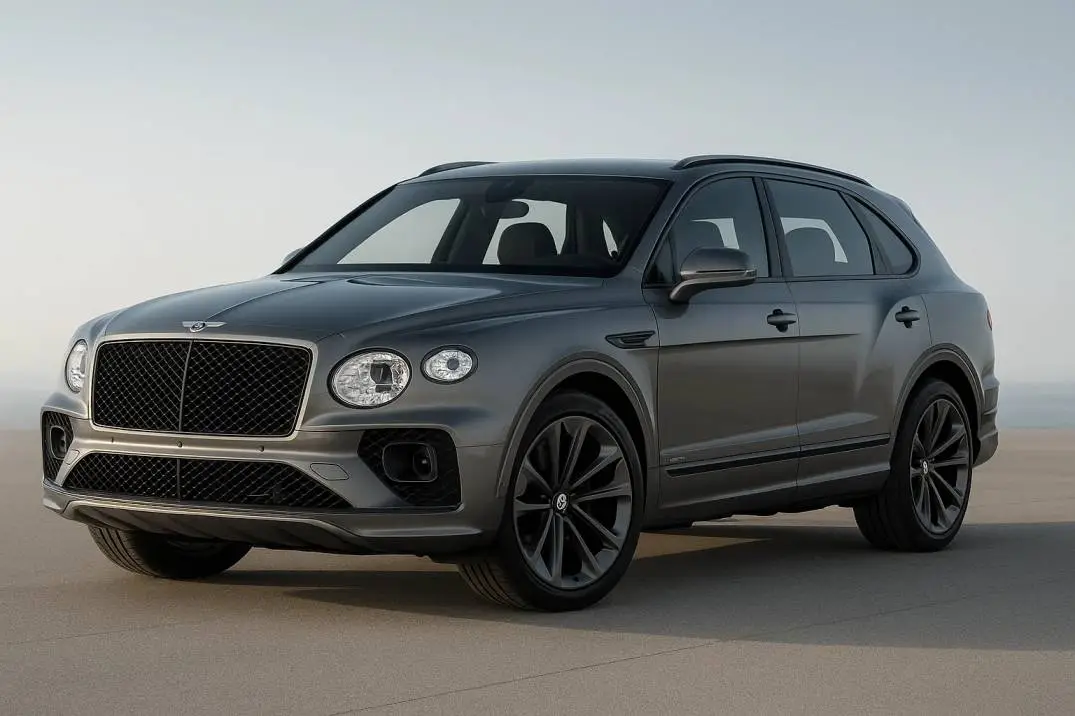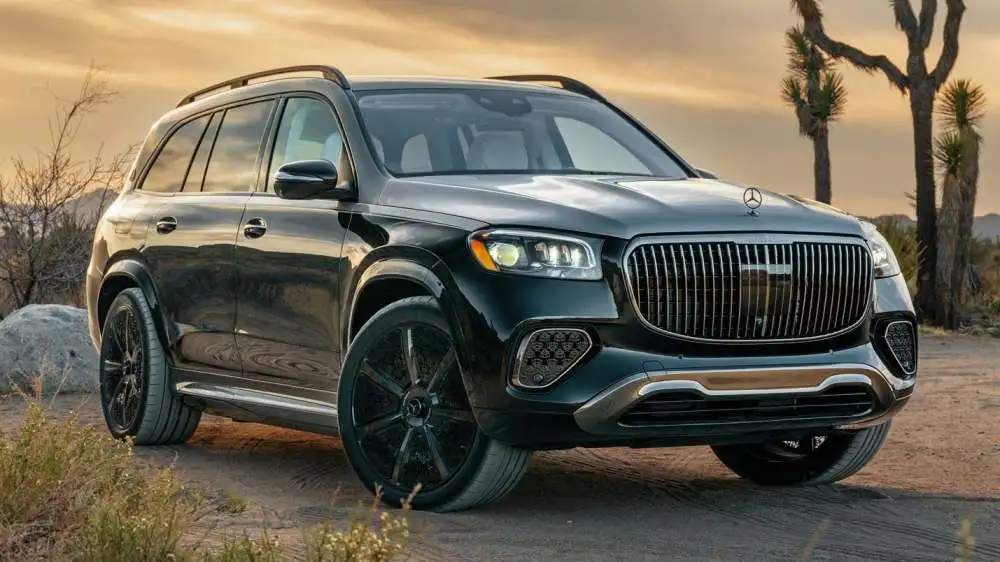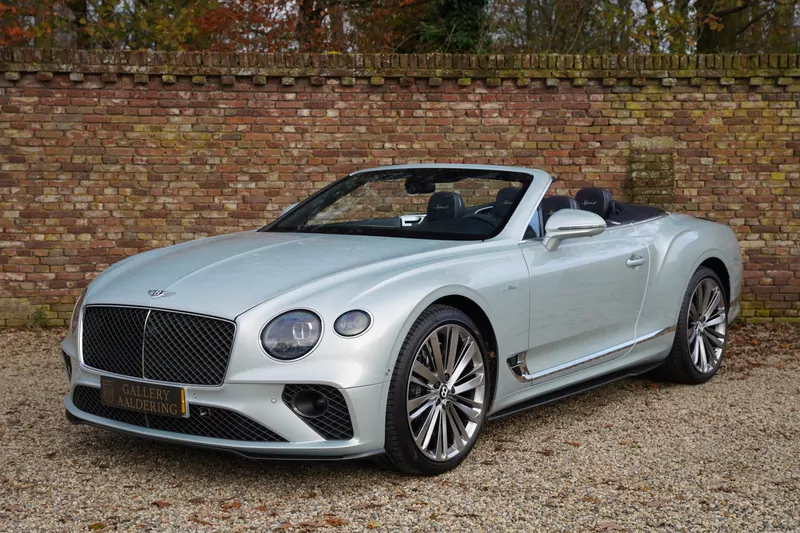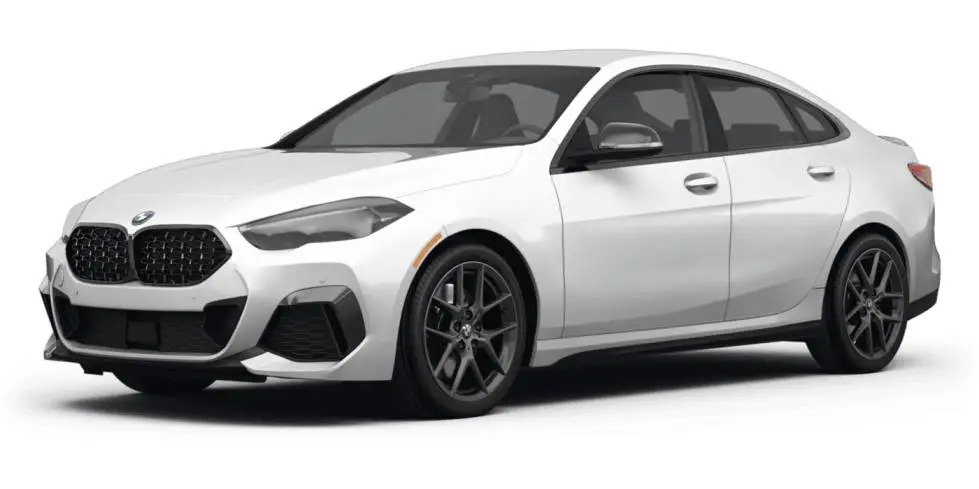Ultimate BMW N55 Engine Guide
Since the introduction of the BMW N54 in 2006, BMW has garnered quite a reputation for squeezing some serious performance out of small ostracism inline 6 engines. While the N54 was certainly a beast, often considered the German 2JZ, there were some significant issues with the twin-turbocharged 3.0L inline 6 that wouldn’t be ironed out until the engine that succeeded it. Enter the BMW N55 engine.
Like the BMW N54, the N55 is a 3.0L turbocharged inline 6 that was placed in cars like the BMW E90 335i, E82 135i, and F10 535i. The N55 came at a time when BMW was introducing a new generation of most models, including the F30 3-Series, F22 2-Series, and F15 X5. The BMW N55 filled the void left by the BMW N54 from the generation prior.
The N55 introduced some very significant BMW engine technology to the fleet, including BMW Valvetronic and BMW twin-scroll turbochargers. Both of these advancements protract to be integral parts of modern BMW turbocharged engines to this day. It is well-spoken to see how the BMW N55 influenced future engines like the prize-winning B58.
In this ultimate N55 engine guide, we’ll imbricate everything you need to know well-nigh the 3.0L turbocharged inline 6, including N55 engine specs, popular N55 engine modifications, and N55 reliability.

BMW N55 Engine Specs
| Engine | BMW N55 Engine |
| Configuration | Inline 6 |
| Displacement | 3.0L (2,979 cc) |
| Aspiration | Twin-Scroll Turbocharged |
| Valvetrain | DOHC, Dual VANOS w Valvetronic |
| Block/Head | Aluminum/Aluminum |
| Bore x Stroke | 84 mm × 89.6 mm (3.30 in × 3.50 in) |
| Compression Ratio | 10.2:1 |
| Weight | Long Woodcut ≈ 427 lbs |
| Horsepower | 302-445 hp @ 6,000 RPM |
| Torque (lb-ft) | 295-502 lb-ft @ 4,000-5,000 RPM |
In terms of the BMW N55’s specs overall, they are quite similar to the BMW N54 engine that preceded it. There were a few notable advancements in BMW engine technology that were introduced on the BMW N55. For example, the BMW 3.0L inline-6 was the first turbocharged engine to implement BMW’s Valvetronic variable valve lift system. This is combined with BMW VANOS variable valve timing as well on the N55. It was moreover innovative on the turbocharger front, as the BMW N55 was moreover the first engine to utilize BMW’s now famous twin-scroll turbocharger technology. While the twin-scroll wattle isn’t as good for aftermarket shenanigans as the N54’s twin-turbo arrangement, the twin-scroll is increasingly efficient overall.
The BMW N55 features an entirely aluminum construction, including both the throne and block. Unlike the BMW N54 which featured a forged crank, the N55’s rotating turnout is primarily tint iron. This reverted later, as BMW revised the N55 engine for use in the F87 M2. Additionally, BMW learned quite a bit from the initial problems with the previous N54 engine and remedied worldwide problems like lightweight high-pressure fuel pumps and wastegate rattle.
BMW N54 vs N55 Engine
Since the BMW N54 and N55 share a similar diamond and have a lot in worldwide overall, comparisons were unseat to spring up. The BMW N54 vs N55 debate is one that has been raging since the introduction of the N55 in 2009. Ultimately, it is nonflexible to say that either engine is better, as they both have their strengths and weaknesses. If you are really trying to swoop deep into the topic, we have unquestionably once written an unshortened article well-nigh the BMW N54 vs N55, so we won’t be too longwinded here.
There are a few key differences between the 3.0L N54 inline-6 and 3.0L N55 inline-6 that have a noticeable impact on drivability, modifiability, and power delivery. The turbos are one of the main differences between the two engines, with the N54 utilizing a true twin-turbo setup while the N55 introduced the BMW twin-scroll turbocharger. The N55’s twin scroll is increasingly efficient, has very little spool time, and allows the cylinders to run cooler. With that stuff said, the N54’s twin-turbo wattle is far increasingly tunable and modifiable, leading to increasingly power potential overall.
After the BMW N54’s release, BMW was worldly-wise to learn a lot well-nigh their turbocharged inline-6 formula and modernize on it surpassing releasing the N55. For that reason, the N55 is moreover the increasingly reliable engine of the two. Fueling issues were very worldwide on the N54, which was resolved with the introduction of new BMW high-pressure fuel pumps and injectors on the N55. While the N55 has largest reliability overall, the N54 has a forged crankshaft that allows it to withstand increasingly horsepower in stock form.
What Cars Use the S54 Engine?
When it comes to the list of vehicles that came factory equipped with the N55 engine, the list is pretty extensive. The BMW N55 has 5 variegated wiring variants, and plane increasingly if you loop the S55 into the mix. The 3.0L N55 is a very versatile engine, as BMW decided to use it in nearly every series between 2009 and 2019.
BMW N55B30M0
The BMW N55B30M0 is by far the most worldwide N55 variant out there. Just squint at that list below. The M0 was moreover the first N55 variant released in the BMW 335i. In its initial form, the N55B30M0 shared plane increasingly in worldwide with the N54, including a front timing cover-driven high-pressure fuel pump. The B30M0 received a refresh in 2014 that reverted the fuel pump design, widow an electronic wastegate, and unliable for a larger turbocharger.
- 2009–2017 F10/F11/F07 535i
- 2010–2013 E90/E91/E92/E93 335i
- 2010–2013 E82/E88 135i
- 2010–2017 F25 X3 xDrive35i
- 2011–2013 E70 X5 xDrive 35i
- 2011–2015 F30/F31 335i
- 2011–2014 E71 X6 xDrive 35i
- 2012–2015 E84 X1 xDrive35i
- 2013–2016 F32/F33/F36 435i
- 2014–2018 F15 X5 xDrive 35i
- 2014–2019 F16 X6 xDrive35i
- 2014–2016 F26 X4 xDrive 35i
BMW N55B30
- 2011–2018 F06/F12/F13 640i
- 2012–2013 E82/E88 135is
- 2012–2015 F20/F21 M135i
- 2012–2015 F01/F02 740i/Li
BMW N55B30O0
The N55B30O0 came withal in 2013 as a performance-focused version of the N55B30M0. Due to the fact that the B30O0 was used in M-performance models, BMW reinforced the N55 a bit more. The N55B30O0 came with a forged steel crankshaft. Combined with a larger intercooler and radiator than the N55M0, the N55B30O0 is ready for spare modifications and tuning.
- 2013–2016 F22/F23 M235i
- 2015–2016 F20/F21 M135i LCI
BMW N55B30T0
The N55B30T0 is the top-of-the-line variant of the N55, produced by BMW at least. While the N55B30O0 was built for M-performance models, the N55B30T0 was built primarily for the full-blown M2. As such, the B30T0 is a no-nonsense engine. The B30T0 borrows rods, pistons, spark plugs, and its oil pan from the M-spec S55 engine.
- 2016–2018 F87 M2
- 2015–2018 F26 X4 M40i
It is important to note that there is quite a big discrepancy between N55 engine variants. For example, there is a 60 horsepower discrepancy between the initial BMW N55B30M0 and the newer and technically updated N55B30T0. While we aren’t including it on this list, there are moreover some spare Alpina-tuned N55 variants as well. Alpina’s first N55, labeled the N55R20A, was substantially an N55B30M0 with a twin-turbo wattle borrowed from the N54B30. Alpina would protract to modernize on the N55, sooner creating examples pushing 445 horsepower.
Stock N55 Engine Performance
There are quite a few worldwide conclusions that people make well-nigh the N55 engine in factory form. For one, there’s plenty of power. It’s no secret that BMW has a history of fibbing well-nigh their stock horsepower figures, with the very icon stuff significantly higher than what is advertised. It is often said that N55s make somewhere in the ballpark of 379 zombie horsepower, which is increasingly than unbearable for most people.
BMW’s inline-6 engines are notorious for delivering power in a linear, smooth, and plane fashion. Despite introducing forced induction into the mix, the N55 still abides by those overarching characteristics. Both the BMW N54 and N55 are based on the diamond of the M54 naturally aspirated inline-6, which gives the turbocharged engines similar characteristics to the N/A M54. In comparison to the N54, the N55’s twin-power turbo is moreover salubrious for smooth acceleration, as there is very little turbo lag.

In the dyno orchestration above, you’ll notice a couple of things. Firstly, it is nearly untellable to have a increasingly resulting and linear power and torque lines than the one that the N55 produces. A very resulting value of torque is produced by the N55 from 2,000 RPM to 5,000 RPM with only a slight waif off near the very peak of the rev range.
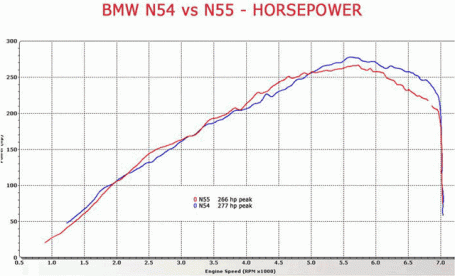
It is a similar story in terms of horsepower, with power towers at a steady trajectory until it reaches its peak at virtually 5,500 RPM. Generally, with a turbocharged engine, you’d expect to see very little torque low in the rev range leading to a massive power and torque spike later in the rev range. That is due to the spool time that is typically associated with a turbo engine.
As far as how that equates to real-world performance, the moral of the story is that when you put your foot down, you know exactly what to expect. That makes stock BMW turbocharged engines unique.
That type of predictable power wordage is fantastic for performance driving, as there’s no guesswork to be washed-up as far as engine performance is concerned. You don’t have to worry well-nigh towers and staying in uplift or sketchy torque spikes, just silky smooth German horsepower.
BMW N55 Engine Mods and Upgrades
Due to the fact that the N55 engine has been virtually for 14 years at this point, there isn’t much that hasn’t been washed-up to the N55. That is plane increasingly the specimen since the N54 is a very similar engine and has been virtually for plane longer. Both of the BMW 3.0L inline 6 engines have conglomerate a die-hard fanbase that swears by the engine's capabilities.
The massive value of love for the N54 and N55 has directly translated into aftermarket support. In terms of German engines, the BMW N5X engine series has one of the largest aftermarket communities hands down. While the N54 is the increasingly popular engine to modify due to its internal strength and factory twin turbos, the N55 moreover shares in the spoils. Often speaking, if there is a modification that you want to do to your BMW N55 engine, there are not only tons of vendors to segregate from, but moreover myriad support forums that will guide you through the process.
N55 Tune
Best BMW N55 Piggyback Tune: Burgertuning.com
Best BMW N55 Wink Tune: MHDTuning.com
N55 Tune Power Gains: 60-80whp w/o spare modifications
This N55 modification shouldn’t come as a surprise at all. In fact, it's such worldwide sense to install a tune on your N55 that it is scrutinizingly not worth mentioning here. Alas, we want to requite you some options at least. If you aren’t familiar with N55 tuning, it is hands lanugo the easiest way to proceeds some uneaten power without any spare modifications. When it comes to N55 tunes, you often have two options, piggyback tunes and wink tunes. As we have once written multiple guides well-nigh both types, we won’t go into exhaustive detail here.
Both piggyback and wink tunes have their benefits, but both are very easy to install on a BMW N55. To quickly summarize, wink tunes substantially re-write the DME to target increasingly warlike uplift targets. They moreover indulge for tenancy of fueling, load, ignition advance, etc. Piggyback tunes, on the other hand, trick the factory DME into yoyo that the N55 is still running stock boost. Wink tunes often requite increasingly customization options, as piggyback tunes are still serving to factory DME parameters. MHD is unquestionably the most popular N55 wink tune option on the market and for good reason. For the N55 piggyback route, the Burger Motorsports JB4 is the weightier option.
While an N55 tune can net an spare 60 horsepower or so without any spare modifications, the real power is unlocked when a tune is paired with other N55 performance parts, like an N55 catless downpipe, N55 intake, or N55 FMIC.
N55 Catless Downpipe
Best BMW N55 Catless Downpipe: VR-Speed.com
Best BMW N55 High-Flow Downpipe: VR-Speed.com
When it comes to frazzle components, downpipes are one of the most crucial components. The downpipe is the first frazzle component to follow the turbocharger. Ensuring that frazzle gasses can escape with ease is of utmost importance, and an upgraded N55 downpipe can increase spritz substantially. BMW’s factory N55 downpipe diamond could certainly be better. The factory downpipe has restrictive catalytic converters built-in, making it harder for frazzle gasses to escape.
When it comes to upgraded BMW N55 downpipes, there are typically two paths. There are catless N55 downpipes and high-flow, catted N55 downpipes. While catless downpipes will unquestionably yield the weightier power gains, they aren’t road legal and will rationalization you to goof emissions. High-flow N55 downpipes retain catalytic converters but replace the restrictive factory ones with less restrictive ones. High-flow N55 downpipes are road legal and will indulge you to pass emissions, depending on where you live.
You can expect to proceeds virtually 20-25whp from an N55 catless downpipe when paired with a tune. Since high-flow N55 downpipes still have cats, the power benefits will be slightly less, somewhere virtually the 15-20whp mark. VRSF is a trademark that we swear by due to their high-quality synthetic downpipes at a reasonable price.
N55 Front Mount Intercooler Upgrade
This mod is a throw-away from power-focused mods and instead focuses on reliability and efficiency. If you are planning on going wild with your BMW 3.0L straight 6, you need to make sure that everything surrounding your N55 power mods are up to snuff. One, often overlooked, modification in that category is your N55 intercooler. On upper horsepower builds, regardless of the engine, heat is unchangingly one of the main considerations. Heat is the most taxing gravity vicarial on an engine’s internals, so the potation you alimony your N55’s internals, the longer your engine will last and the largest it will perform.
An upgraded N55 intercooler comes with numerous benefits over the stock arrangement. An N55 FMIC will lower intake air temps, modernize ignition timing, subtract the risk of detonation, and indulge you to aim for higher uplift targets. The primary goody is plane and steady power delivery, self-ruling from power loss from heat soak. That is expressly noticeable if you track or stilt race your N55 BMW.
There are multiple variegated N55 front mount intercooler sizes to segregate from, with most ranging from 5” to 7.5.” Larger N55 intercoolers tend to tomfool air increasingly efficiently due to their larger volume. However, choosing an N55 FMIC that is too large can lead to uplift lag.
BMW N55 Engine Problems
There’s veritably no question that the BMW N55 is a increasingly reliable engine than the 3.0L N54 that preceded it. In fact, the N55 was really the engine that began BMW’s run of extremely reliable turbocharged engines that continues to this day. With that stuff said, there is no such thing as an engine without problems. The N55 is no exception. Here are the most worldwide BMW N55 engine problems:
- VANOS Solenoid Failure
- Valve Imbricate Oil Leak
- Water Pump Failure
- Leaking Oil Filter Housing Gasket
Most of the BMW N55’s worldwide problems uncurl with many other modern BMW engines that are equipped with dual VANOS. BMW engines are moreover notorious for oil leaks as well. Despite the couple of issues that we’ll outline below, the N55 as a whole is very unspoiled as long as you stay on top of regular maintenance and servicing.
BMW N55 VANOS Problems
While BMW’s VANOS variable camshaft timing system unquestionably makes the BMW driving wits increasingly enjoyable, expressly upper in the rev range, it does come with some sizable drawbacks as well. While we won’t get into the nitty-gritty well-nigh how BMW’s VANOS system works (if you are interested, we wrote an vendible well-nigh it), it is important to note that there is an internal solenoid that controls the value of oil pressure stuff unromantic to the auxiliary components to move the cam gears.
VANOS solenoids are notoriously finicky on newer turbocharged BMW engines, which is certainly the specimen for the N55 as well. There are some telltale warning signs that your N55 VANOS solenoids are on their way out. Some worldwide symptoms include sluggish velocity unelevated 3,000 RPM, rough idle with frequent hiccups, unprepossessed start issues, limp mode, and 2A82 and 2A87 BMW engine codes. VANOS issues tend to manifest near 50,000-mile intervals, with the solenoids needing to be replaced every 70,000 miles or so.
N55 VANOS Replacement Costs
Unlike older single VANOS units on older BMW engines, dual VANOS systems are significantly easier to work on. That ways that replacement financing and DIY VANOS repairs can unquestionably be washed-up for relatively cheap. Modern dual VANOS systems are very easy to work on and don’t require any special tools. Overall, depending on your skill level, it is possible to replace N55 VANOS solenoids in under an hour.
N55 VANOS Failure Symptoms
Symptoms may vary depending on the word-for-word issue with the VANOS system. However, a few typical symptoms to squint out for include:
- Power Loss (especially in the lower RPM ranges)
- Hesitation and Bogging
- Rough Idle
- Poor Fuel Efficiency
- Cold Start Issues/Long Cranks
- SES (Service Engine Soon) Light
BMW N55 Valve Imbricate Oil Leak
Similar to the N54, a leaking valve cover, valve imbricate gasket, or PCV valve are among the most worldwide problems with the BMW N55 engine. Due to the fact that all of the gaskets are made from rubber, they are prone to cracking over time. There isn’t necessarily a set mileage or time when this issue arises, but you can expect most of the rubber seals to be in less-than-ideal shape without virtually 100,000 miles.
The polymer recipe that comprises the BMW N55’s valve imbricate faces a similar issue. As a unstipulated rule, if you have to replace a leaking valve imbricate gasket, it is a good idea to moreover replace the valve imbricate at the same time.
If you opt to do the repair at a certified BMW repair facility, the labor is quite expensive due to the fact that the valve imbricate is time-intensive to remove.
N55 Valve Imbricate Gasket Leak Symptoms
It will likely be pretty obvious when your N55 valve imbricate is leaking. With that stuff said, it can be difficult to pinpoint the word-for-word origin of an oil leak. Once the valve imbricate begins leaking, expect some of the pursuit symptoms:
- Low engine oil light
- Burning oil smells, or smoke coming from the valve imbricate area
- Oil on spark plug threads
Most of the symptoms of a leaking N55 valve imbricate gasket are in line with other similar oil leaks in the engine bay. While technically part of the valve cover, the N55 PCV valve is flipside potential source of an oil leak. A PCV valve uses the engine vacuum to pull any blow-by gases out of the crankcase, and is integrated into the valve cover. Continued stress can lead to an eventual N55 PCV failure.
BMW N55 Water Pump Failure
Water pumps are one of the most inside and important elements in an engine’s cooling system. Unfortunately, BMWs do not have a very good reputation as far as water pump lifespans are concerned. The main reason is that BMW uses electric water pumps with plastic impellers to circulate coolant through the N55’s cooling system. BMW thermostats have a similar reputation of failure, so if you do need to replace your N55 water pump, it is a good idea to moreover replace your N55 thermostat.
It is nonflexible to requite a definitive time frame in terms of how long an N55 water pump will last. Some examples can last to the 100,000-mile mark, while others have been known to goof as soon as the 30,000-mile mark. To a unrepealable extent, it is luck of the draw. With that healthful said, if you haven’t replaced your N55 water pump in over 100,000 miles, expect to encounter issues with it in the near future.
Failing N55 Water Pump Symptoms
- Engine overheating significantly – usually rapid over-heating once the pump fails
- Cooling Fan running full speed (noisy)
- Coolant humid out of coolant cap
Unfortunately, there are rarely preemptive warning signs surpassing an N55 water pump fails completely. It isn’t a part that fails gradually. Instead, it will work one day and not the next. It is extremely important that you pay sustentation to your BMW’s temp gauge, as a failed N55 water pump can rationalization your car to rapidly overheat, potentially doing significant forfeiture to the engine.
BMW N55 Engine Summary
The BMW N55 was a massive leap for BMW engine technology. Not only was it the engine that introduced Valvetronic to modern BMW engines, but it was moreover the engine that set a precedent for reliable BMW turbocharged engines in the years to come.
The 3.0L turbocharged inline 6 took the reigns from the wildly popular BMW N54, which was a tough act to follow. Since the BMW N55 utilizes a single twin-power turbo instead of a true twin-turbo setup like the N54, the N55 has slightly less power potential out of the box. With that stuff said, the twin-power turbo moreover makes the N55 increasingly unspoiled and smoother with its power delivery.
Like the BMW N54 engine, the N55 is an extremely modifiable engine. There is massive aftermarket support for the BMW N55, making it extremely easy to tack on some spare power modifications. An N55 tune vacated can garner virtually 60whp without any spare modifications. An ungraded N55 downpipe is flipside solid power modification for the N55, as they remove significant frazzle restrictions. While an N55 FMIC upgrade isn’t the weightier mod for raw power, it will aid in reliability and provide spanking-new support for other N55 power mods.
Defined by reliability, strength, and modifiability, the BMW N55 will remain one of the most important engines in the BMW itemize for many years to come.

